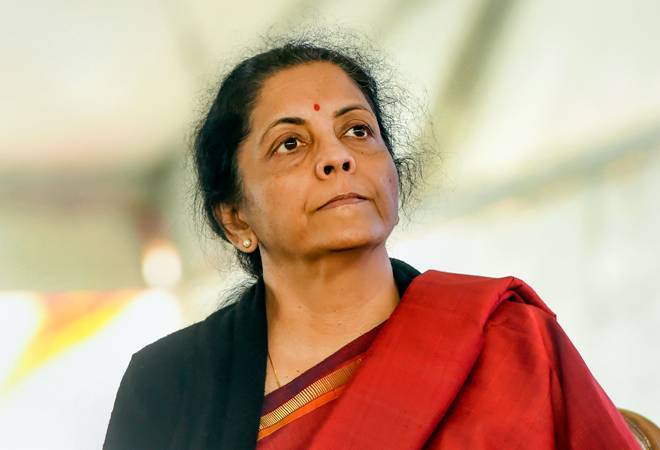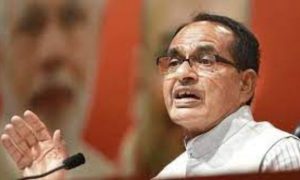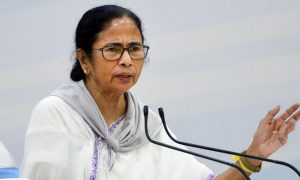Coming ahead of the crucial 2024 General Elections, there was much anticipation in the run-up to the Interim Budget 2024-25. Though the government had repeatedly emphasised that there wouldn’t be any big-bang measures aimed at shoring up votes before the polls, there was still speculation that some such benefits would be announced.
Read More: India’s poverty level down to 5% of population, says NITI Aayog CEO
Interest was piqued on January 29, two days before the Interim Budget was presented, when the finance ministry released a mini Economic Survey of sorts. It stated that India is expected to become a $5-trillion economy in the next three years and could aspire to become a $7-trillion economy by 2030.
“This will be a significant milestone in the journey to delivering a quality of life and standard of living that match and exceed the aspirations of the Indian people,” said the report, titled ‘The Indian Economy: A Review’. It also looked back at the last decade and identified factors that have underpinned the economy’s resilience.
Not surprisingly, then, Union Finance Minister Nirmala Sitharaman used the Interim Budget to present a blueprint for the future and consciously abstained from making any big promises, opting instead for fiscal prudence. She focussed on sustaining at least 6.5–7% growth in the gross domestic product (GDP) in the coming years and providing the means to ensure that the benefits of this growth trickle down to all.
“The Union Budget for FY25 aims at sustaining growth through renewed emphasis on capital expenditure and strengthening the social safety net for the poor and vulnerable through prudent fiscal management,” said the Medium Term Fiscal Policy and Fiscal Strategy Statement.
Towards this end, the Interim Budget took up the theme of social justice and empowerment—be it through its focus on the four “caste” groups of women, youth, the poor, and farmers; or proposals such as a new scheme that would help the middle class buy or build their own houses; rooftop solar panel installation to not only encourage sustainable development but also provide up to 300 units of free electricity per month to 10 million households; and a Rs 1 lakh crore corpus to encourage the private sector to scale up research and innovation significantly in sunrise domains.
Similarly, plans were laid out to set up a high-powered committee to review challenges arising from fast population growth and demographic changes. Then there was the decision to encourage states to take up reforms with an outlay of Rs 75,000 crore as a 50-year interest-free loan this year to support milestone-linked reforms in sectors like health, education, land, and labour. What was also pretty clear was the intention to push themes such as deep tech and measures for promoting a blue economy.
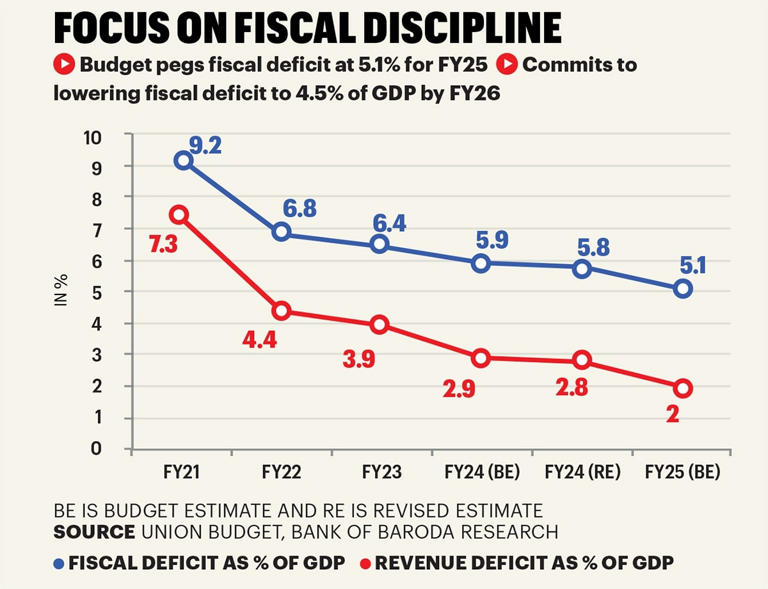
“The Interim Budget for FY25 signals policy continuity by sticking to fiscal rectitude, thrust on maximising bang for the buck via prioritisation of hard capex, housing, and digital penetration. Lowering the fiscal deficit target strengthens the government’s commitment to preserving macro-financial stability while being prudent enough to ensure that the gradual tapering of fiscal accommodation in the post-pandemic phase does not result in any economic withdrawal symptoms,” said a report by QuantEco Research. The fiscal deficit is the gap between the government’s earnings and expenditure.
Others believe the decision to steer clear of spectacular announcements stems from the government’s confidence that it enjoys public support. “The government had the option of announcing some measures in the Budget aimed at its target constituents—the poor, youth, farmers, and women. However, by sticking firmly to macro prudence, we think the government is signalling that it is fairly confident of adequate public support, obviating the need to rely on any last-minute populism,” said a report by Nomura.

Projections
What was striking for analysts were the credible projections in the Interim Budget, along with the focus on fiscal consolidation and the continued thrust on capital expenditure. “That has been the hallmark of the last five years. The Budgets have been prudent, conservative, and transparent. [The Interim Budget] has adhered to that formula. You under-promise, over-deliver and generate credibility for the process rather than over-promise and under-deliver,” says V. Anantha Nageswaran, the Chief Economic Adviser and also the chief author of the review.
In FY25, the finance minister aims to lower the fiscal deficit to 5.1% of the GDP from 5.8% in the current financial year and has reiterated the government’s commitment to sticking with the glide path to reduce the fiscal deficit to less than 4.5% by FY26.
Read More: What Led to INDIA Bloc Collapse Just Before LS Polls? What will Congress Do Now | Explained
Projections for growth and tax collections are also being seen as equally plausible and, at times, even conservative. The Interim Budget has pegged nominal GDP growth at 10.5% for FY25. Finance Secretary T.V. Somanathan says the government is confident of achieving this target. “We have assumed 10.5% nominal GDP growth. This could be any combination of real plus the GDP deflator, which could be 6.5% plus 4%, or 7% plus 3.5%, or 6.5% and 4%,” he says.
Gross tax collections are expected to grow by 11.5% to Rs 38.3 lakh crore over the Revised Estimate of Rs 34.4 lakh crore for this fiscal. This translates into a tax buoyancy of 1.10. Within the gross tax revenue, direct and indirect taxes are individually estimated to grow at 13.1% and 9.4%, respectively.
The Central Board of Direct Taxes (CBDT) as well as the Central Board of Indirect Taxes and Customs (CBIC) are confident that the tax collection targets are feasible and achievable.
“GST collections next fiscal are estimated at Rs 10.68 lakh crore, which is an 11.6% growth compared to the Revised Estimate this fiscal. The tax buoyancy of GST revenue is around 1.1. So, that gives us confidence that we will be able to collect the GST revenue as per the target set for the next financial year,” says Sanjay Kumar Agarwal, Chairman of the CBIC, adding that customs duty collections have been impacted by a contraction in merchandise imports as well as softer commodity prices this fiscal, and the growth has been kept modest for the next fiscal as well.
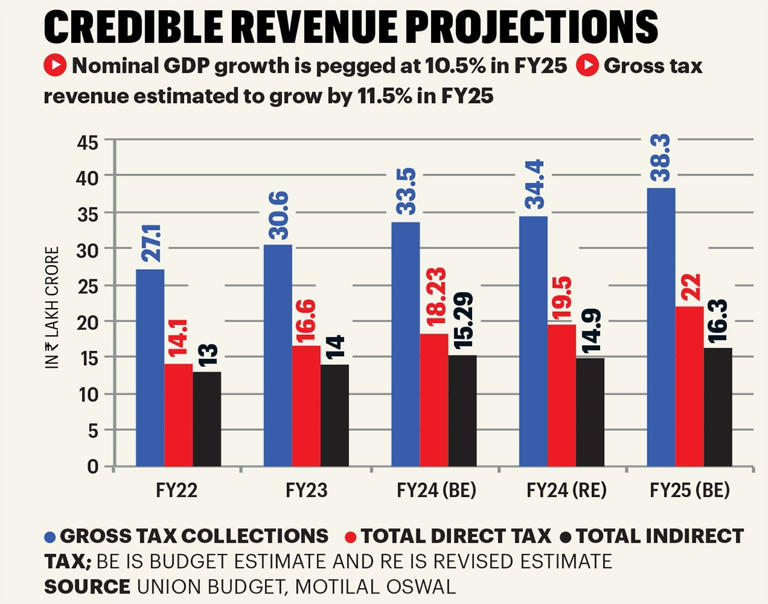
Nitin Gupta, Chairman of the CBDT, notes that the targets for direct tax collections for FY24 and FY25, too, are realistic and achievable. “Over the last few years, the department has made a lot of effort to develop confidence with the taxpayer and has also used technology to benefit the taxpayer through various services and initiatives. The taxpayer, too, is reciprocating, complying with tax laws, and paying taxes. This has resulted in not only an increase in tax collections but also in the widening of the taxpayer base.” Direct tax collections are estimated to grow by 13% to Rs 21.98 lakh crore next fiscal, which translates into a direct tax-to-GDP ratio of 6.7, up from 6.6 in FY24.
Revenue from disinvestment of government stake in public sector enterprises has been lower than anticipated at Rs 30,000 crore this fiscal and is pegged at Rs 50,000 crore for the next fiscal with many ongoing transactions such as the privatisation of IDBI Bank and Shipping Corporation of India yet to be completed. Of this target, asset monetisation is expected to fetch about Rs 12,000 crore this fiscal and another Rs 15,000 crore next fiscal.
However, Tuhin Kanta Pandey, Secretary, Department of Investment and Public Asset Management (DIPAM), underlines that disinvestment should not be seen as a cash cow for the government, and these numbers remain fluid. “We are in a space where value creation is very important. Disinvestment and dividends of CPSEs (central public sector enterprises) put together raised Rs 93,000 crore in FY23. We have raised another Rs 56,000 crore through this till now in FY24, and we will be close to Rs 94,000 crore by the end of the fiscal. You cannot look at a single target in isolation,” he points out. He adds that the government may be the majority shareholder in PSUs (public sector undertakings) but needs to keep in mind the interests of minority shareholders as well.
The size of the Budget has increased to Rs 47.7 lakh crore in FY25 with an unprecedented Rs 11.1 lakh crore allocated for capital expenditure. The scheme for providing financial assistance to the states for capital expenditure has been continued in FY25, with a total outlay of Rs 1.3 lakh crore.
Tax treatment
The biggest surprise of the Budget was, however, the decision to keep tax rates unchanged, leaving any review for the full Budget in July. While this is in line with precedence, as the Interim Budget traditionally does not introduce any major changes in tax policy, expectations were rife given what was done in the last Interim Budget in 2018-19, which promised that income tax would not be levied on income up to Rs 5 lakh.
Revenue Secretary Sanjay Malhotra points out that the income tax rate was re-jigged in the Union Budget of FY24 with no tax on income till Rs 7 lakh per annum. “It’s not fair to expect changes in tax rates too frequently. And there is merit, beauty, stability, and simplicity in stable tax rates. Also, rates for personal income tax were revised only last year, and this is too short a period to actually even evaluate the impact of those changes, review them, and further make any changes,” he says. A review of customs duty tariffs will be taken up in the full Budget in July after stakeholder consultations, he adds.
Further, with high inflation, especially rising food prices, pinching pockets and signs of rural distress, there were expectations that the Interim Budget would give some push to consumption.
Anantha Nageswaran points out that the Pradhan Mantri Garib Kalyan Anna Yojana, the free foodgrain distribution scheme, has already been extended by five years, while cash transfers through various schemes such as the Mahatma Gandhi National Rural Employment Guarantee Scheme and PM Kisan Samman Nidhi, under which farmers are given income support, continue. “But this is a direct route to putting cash in the hands of the people. This is a fiscal stimulus and can lead to a higher money supply. Instead, we can try to create conditions for employment generation, income growth, and, therefore, consumption growth, which is an indirect route,” he says.
“It is okay to try and boost consumption for one year or two years through these methods, but they can lead to high inflation, which will then affect the purchasing power of households. We are actually planning and executing for medium-term sustainable growth,” he underlines.
The full Budget in July may choose to take up some of these themes and review projections for growth, tax collections, and sectoral allocations based on the global and domestic macroeconomic situation at that time. Long-pending proposals, such as a review of the complex capital gains tax regime and a review of customs duty tariffs, may also be taken up. What would really please trade and industry, as well as taxpayers, would be the rationalisation of tax slabs under the goods and services tax.
Read More: Bharat Tex 2024: PM Narendra Modi Inaugurates Global Textile Expo In Delhi, Check Details
The finance ministry’s White Paper on the Economy highlighted the NDA government’s achievements in the last decade that has turned the economy from one of the “fragile five” to the “top five” in the world. The government hopes to build on these reforms in the next 25 years.
For now, the Interim Budget has given a peek into what might be taken forward in the full Budget four months down the line. Of course, that will have to wait for the elections.

